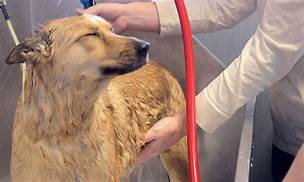What Snakes Are Good Pets?
Snakes can make fascinating and rewarding pets. They are relatively low-maintenance, and they can be very engaging to watch. If you are thinking about getting a snake as a pet, there are a few things you should keep in mind.

Choosing the Right Snake
The first step in getting a snake as a pet is choosing the right one. There are many different types of snakes available, and each one has its own unique personality and care requirements. Some of the most popular pet snakes include:
1. Corn snakes: Corn snakes are known for their docile temperament and easy care. They are also relatively small, making them a good choice for beginners.
2. Ball pythons: Ball pythons are another popular choice for pet snakes. They are also docile and easy to care for. However, they can be a bit more expensive than corn snakes.
3. King snakes: King snakes are a bit more active than corn snakes and ball pythons. However, they are still relatively easy to care for. King snakes come in a variety of colors and patterns, making them a popular choice for snake enthusiasts.
Providing the Right Care
Once you have chosen a snake as a pet, you need to provide it with the right care. This includes providing it with a proper enclosure, food, and water.
1. Enclosure: Snakes need an enclosure that is large enough for them to move around comfortably. The enclosure should also be secure, so that the snake cannot escape.
2. Food: Snakes are carnivores, so they need to eat live or frozen prey. The type of prey that you feed your snake will depend on the size of the snake. Smaller snakes can eat small rodents, such as mice and rats. Larger snakes can eat larger prey, such as rabbits and chickens.
3. Water: Snakes need access to fresh water at all times. The water bowl should be large enough for the snake to soak in.
Handling Snakes Safely
Snakes are not inherently dangerous, but they can bite if they are threatened. It is important to handle snakes safely to avoid being bitten.
1. Always wash your hands before handling a snake. This will help to prevent the spread of bacteria.
2. Approach the snake slowly and calmly. Avoid making sudden movements.
3. Support the snake's body with one hand while you hold its head with the other hand. Be gentle and avoid squeezing the snake.
4. Never pick up a snake by the tail. This can cause serious injury to the snake.
Conclusion
Snakes can make fascinating and rewarding pets. However, it is important to do your research before getting a snake as a pet. You need to make sure that you are prepared to provide the snake with the proper care and that you are comfortable handling it safely.
Declaration: All article resources on this website, unless otherwise specified or labeled, are collected from online resources. If the content on this website infringes on the legitimate rights and interests of the original author, you can contact this website to delete it.





